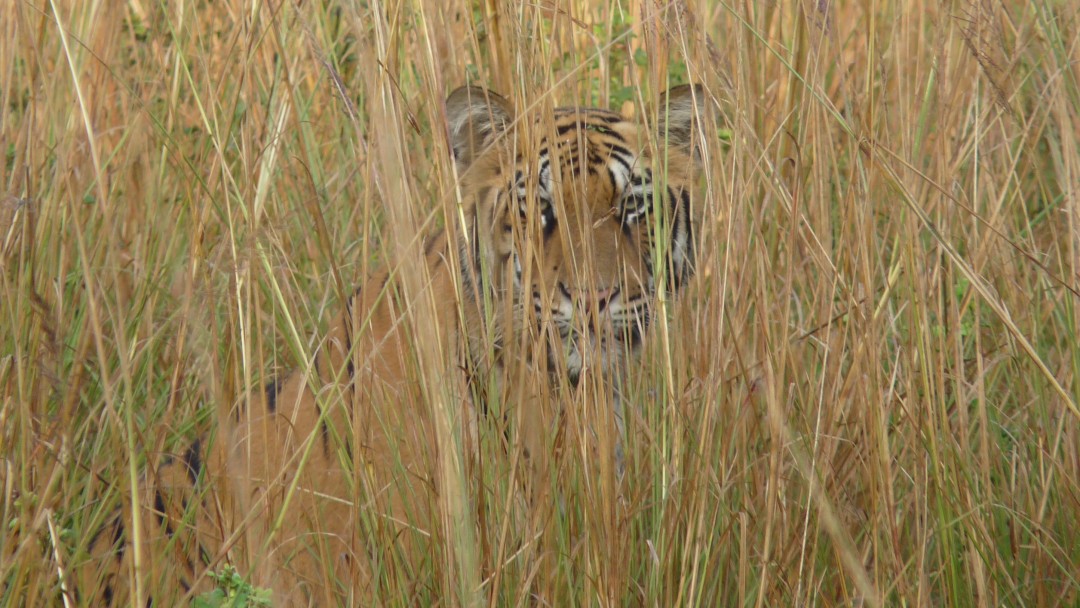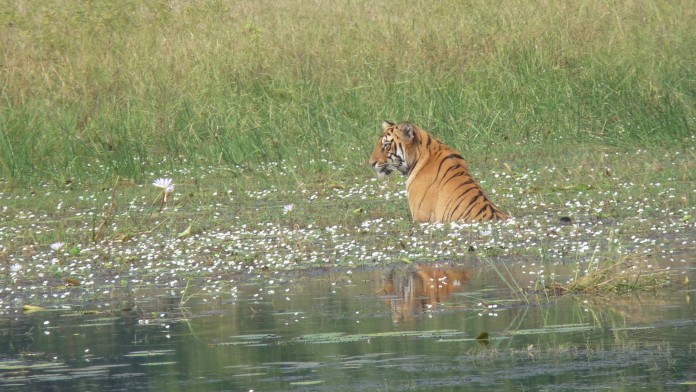News from 2018-12-06 / KfW Development Bank
KfW steps up its commitment to tigers

Out of all of the planet's endangered species, this breed of big cat from Asia is one of the most impressive. To ensure their survival, far-reaching protection measures must be established for their complex habitats. However, any protection must also be in line with the needs of the humans who live in close proximity to tigers. The local population's living conditions and income sources must be arranged so that they do not conflict with species protection and conservation but instead support it.
This is where KfW comes in. Using funds from the German Federal Government, the bank is now providing a further EUR 7.5 million to improve conservation zone management for tigers' natural habitats and to help protect tiger populations. When the financing agreement with the International Union for Conservation of Nature (IUCN) was signed in Frankfurt, Ronald Siller, a Senior Vice President at KfW, said: “With this agreement, Germany is making an important contribution to protecting biodiversity and, in particular, tigers on a global scale. Cooperation with the local population is an especially important factor in this work.”
The funds will be provided as part of the second phase of a programme that already received EUR 20 million from KfW in 2014 on behalf of the German Federal Ministry for Economic Cooperation and Development (BMZ). Through the IUCN, funding will be issued to national and international organisations as well as local conservation authorities in core tiger areas – these are countries that attended the 2010 International Tiger Summit and agreed to work together to double the number of tigers living in the wild. Back then, there were only around 3,000 wild tigers left. According to recent estimates, this figure has since risen to 3,900 and is expected to grow to over 6,000 by 2022.

To achieve this, projects are often financed in transnational conservation areas, particularly in India, Nepal, Indonesia, Bhutan and Myanmar. Projects are selected in a competition-style process. The aim of this process is to preserve expansive, intact habitats where the animals have the chance to develop. Further goals include reforesting areas and creating new jobs in the field of conservation zone management or eco-tourism. As a result, the aim is to improve the living conditions for the mostly poor populations living in these areas. Over 600 jobs were created in the first phase, and almost 55,000 people profited from the support.
Various awareness measures also help local people to understand how important an intact natural environment is to their own lives. After all, it is not only tigers who need this support, but also other species of flora and fauna that people rely on for their livelihoods. Poaching poses a major problem in this regard. Various measures are helping to counteract this trend, such as equipping rangers with vehicles, GPS equipment, binoculars and camera traps. And last but not least, protecting tigers also means protecting our climate. After all, efficient and effective ecosystems help to cushion the effects of extreme weather – a phenomenon that is sadly on the rise in this region.

Share page
To share the content of this page with your network, click on one of the icons below.
Note on data protection: When you share content, your personal data is transferred to the selected network.
Data protection
Alternatively, you can also copy the short link: https://www.kfw-entwicklungsbank.de/s/enzBWrMC.B57A
Copy link Link copied